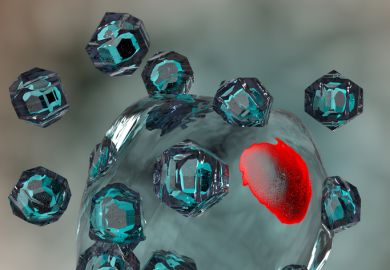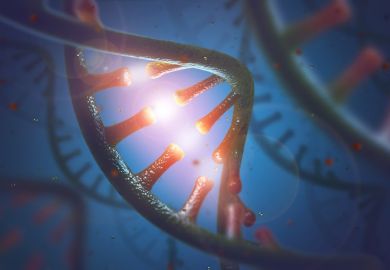The nature versus nurture debate has rumbled on for ages. David Weatherall discovers some subtle new arguments
In Nature via Nurture , a recent account of the age-old debate about the relative roles of nature and nurture in making us what we are, Matt Ridley painted a vivid picture of the activities of a gene called SRY, a major player in masculinisation. He suggested that its main job, with the help of a large supporting cast of genes, is to extract information from the upbringing and environment of its landlord's organism - the food required to grow a masculine body, the social information needed to develop a masculine psyche, the appropriate gender cues to produce a male sexual preference - and much more. In short, SRY is no more than a glorified nurture-extractor.
This view of things may come as something of a surprise to many people. After all, it is unusual to open a newspaper these days without reading an account of the discovery of a "new" gene for something or other.
The list seems to be never-ending: heart disease, diabetes, divorce, homosexuality and many more. We even read that prisoners on death row are presenting their genetic make-up as evidence for their irresponsibility for their actions, and James Watson, the co-discoverer of the structure of DNA, tells us that, although we used to think that our fates lay in the stars, it is now clear that they reside in our genes.
In the field of human genetic disease, particularly, it has been clear for a long time that this genetic deterministic view of things is much too simple. Even in those diseases that seem to result from the action of a single defective gene, the inheritance of which can be traced through families in a way that reflects Mendel's laws, it is well documented that their severity can be modified by the action of a number of other genes, together with variation in the patient's environment. Many of major killers that strike in middle life, including heart disease, stroke and diabetes, that are rather unfortunately called multigenic diseases are turning out to be caused by different responses to environmental agents mediated through variability in the function of many different genes. And most cancers seem to reflect the acquisition of damage to our genes during our lifetimes, mediated through external and internal environmental agents.
There is also tantalising evidence that the structure of our genes and the way they are regulated may be modified during our lifetimes, and that at least some of these changes may be environmentally induced. Even the structure of the genomes of identical twins seems to diverge with increasing age. Clearly, the nature/nurture debate is far from over, but it remains at the very centre of modern biology and medicine.
As evidenced by the lengthy and often acrimonious arguments about the relative roles of nature and nurture in the acquisition of intelligence, and some of the early debacles in attempts to search for genes for major psychiatric disorders, the field of behavioural genetics always seemed likely to be at the heart of these heated controversies. Hence, Michael Rutter's Genes and Behaviour could not have appeared at a more opportune time.
Obviously well aware of the turbulent past of this field, Rutter devotes a considerable part of his story to analysing the pros and cons of the approaches required to try to distinguish between nature and nurture as the basis for human behaviour, notably twin and adoption studies and the complex statistics that are required for their design and their interpretation. He augments this critical analysis with an excellent account of the concept of risk factors and the advantages and pitfalls of large-scale association studies. Against the background of this methodological uncertainty, he reviews recent studies of a wide variety of behavioural traits and psychiatric disorders, before rounding up with an extremely encouraging account of how modern genetic technology is making it possible to define at least a few of the genes involved in increased risk for these disorders and how variation in their function can be interpreted in terms of the findings in his patients.
In these days when so much of medical genetics revolves around extensive "blind" searches of the genome for susceptibility genes, it is encouraging to see how much progress is being made in Rutter's field by conventional, hypothesis-driven science. He recounts several encouraging stories of this kind.
For example, it was reasoned that a change in the regulatory region of a gene for a particular neurotransmitter-metabolising enzyme might moderate the effect of child maltreatment in predisposing to antisocial disorders.
The findings of the study that was based on this notion, which have now been replicated, showed that maltreatment of children with this particular genetic make-up was associated later in life with the more frequent development of conduct disorders, antisocial personality and violent crime than in children who did not have the variant form of the gene. Several other examples of this type of approach are cited.
Rutter concludes that, with a few rare exceptions, we do not carry "genes"
for our different patterns of behaviour or for psychiatric illness. Rather, we have a remarkable degree of variability in our genetic make-up that makes us more or less susceptible to a variety of environmental agents. In some cases our genetic constitution is of major importance, in others the environment seems to play the dominant role.
While readers may require help from other sources to get to grips with some of the more complex issues of human gene structure, regulation and functional diversity, Rutter offers a highly critical and extremely clear and well-written review of the current state of the nature/nurture argument as it relates to human behaviour and psychiatric illness. They should not be put off by this work's textbook-like appearance; it is written in a way that should be easily accessible to the general reader as well to as the specialist. And, since its subject matter affects all of us, it should be read widely.
The emerging message from the rapidly moving fields of modern biology and molecular genetics is that we are by no means at the mercy of our genetic make-up. Our genes carry the information to regulate the structure and production of proteins, the building blocks of our tissues and organs and the mediators of the complex chemistry that is the basis of life. From time to time changes, or mutations, occur in their structure. These may have no effect at all or they may alter the function of a gene or its product; in some environments such changes may be beneficial, in others detrimental.
But our environments are constantly changing and so the modification of a gene's function that either had no effect or was beneficial might, in new environmental circumstances, make us more prone to a particular disorder.
Except in rare cases, we do not have "genes" for schizophrenia or heart disease; rather we have a number of genes the structure of which may make us more or less susceptible to particular environmental insults and hence make us more or less likely to contract these diseases. The importance of identifying them lies in the possibility that their variant action may provide clues to the functional basis of a disease and hence how better to avoid or treat it. Sorting out these complex interactions may take many years but, as evidenced by this book, even in the arcane field of behavioural genetics, we are starting to make genuine progress.
For reasons of political correctness, "lunatic" is now a rarely used word.
But perhaps its age-old intimation that madness is related to the state of the moon still has a message for us today, albeit an indirect one. Or, to give Ridley the last word, "nature versus nurture is dead. Long live nature via nurture".
Sir David Weatherall is emeritus regius professor of medicine, Oxford University, and chancellor of Keele University.
Genes and Behaviour: Nature-Nurture Interplay Explained
Author - Michael Rutter
Publisher - Blackwell
Pages - 280
Price - £50.00 and £14.99
ISBN - 1 4051 1062 7 and 1061 9
Register to continue
Why register?
- Registration is free and only takes a moment
- Once registered, you can read 3 articles a month
- Sign up for our newsletter
Subscribe
Or subscribe for unlimited access to:
- Unlimited access to news, views, insights & reviews
- Digital editions
- Digital access to THE’s university and college rankings analysis
Already registered or a current subscriber? Login



